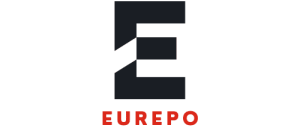How Are Wearable IoT Devices Being Used in Employee Health Monitoring?

In the ever-evolving world of technology, there’s always a new frontier being ventured into. One such area is the use of wearable Internet of Things (IoT) devices in monitoring employee health. As you step into this intricate web of data, health, and technology, you’ll discover how these handy devices are harnessing their power to help keep a check on your health.
The Intersection of IoT and Health
As you delve into the world of IoT and health, you’ll find that these two seemingly different sectors have a crucial common denominator – data. The emergence of IoT in healthcare is a significant development that’s revolutionising the way care is delivered to patients. The application of IoT in healthcare presents an enticing cocktail of benefits, from enhancing patient care to streamlining operations.
Avez-vous vu cela : What Are the Latest Trends in IoT for Garden and Lawn Care?
Wearable IoT devices are at the forefront of this revolution. These devices employ sensors to collect data, such as heart rate, physical activity, sleep patterns, and more. This data is then transmitted to a system or platform where it can be analysed to provide insights into an individual’s health status. But where does the role of these wearables fit in the context of employee health monitoring? Let’s take a closer look.
Wearable IoT Devices in Employee Health Monitoring
Wearable technology has carved a niche in various sectors, from fitness enthusiasts to chronic disease patients. In recent times, these devices have also begun to find their place in workplaces. They’re being used to monitor employees’ health, which, in turn, can help organisations ensure a healthy, productive workforce.
Cela peut vous intéresser : How Can IoT Sensors Improve Indoor Air Quality Monitoring?
Many companies are leveraging IoT wearables to track employees’ vital signs and activity levels in real time. These devices can help identify any potential health concerns, enabling early intervention and care. Furthermore, monitoring employees’ health can help companies determine if their workplace environment is conducive to their employees’ physical well-being.
The Role of Data in Health Monitoring
In employee health monitoring, data is king. The wearable devices generate a wealth of health-related data that can provide valuable insights into an employee’s health. This data can help identify patterns and trends, and in some cases, can even predict potential health issues before they become serious.
For instance, a wearable device can monitor an employee’s heart rate and alert them if it goes above or below the normal range. Similarly, wearables can track physical activity levels, helping employees maintain a healthy lifestyle. They can also monitor sleep patterns, which can be crucial in identifying conditions like insomnia or sleep apnea.
The Benefits and Challenges of Using IoT in Healthcare
The use of IoT in healthcare comes with numerous benefits. For one, it allows for continuous monitoring of patient health, meaning any potential issues can be detected early and addressed appropriately. This can also help reduce healthcare costs as conditions can be managed before they escalate.
Moreover, data from IoT devices can be used to deliver personalised care to patients. By understanding a patient’s specific health patterns and needs, healthcare providers can tailor their care accordingly, potentially improving treatment outcomes.
Yet, despite these significant advantages, the incorporation of IoT into healthcare isn’t without its challenges. One of the most pressing issues is data security. With so much sensitive health data being transmitted and stored, ensuring its protection is paramount.
Changing the Game: The Future of IoT in Employee Health Monitoring
While the use of IoT in employee health monitoring is still in its nascent stages, its potential to transform workplaces is undeniable. As these devices continue to advance, they are expected to offer more intricate health data, enabling even more accurate health assessments.
Moreover, developments in IoT technology are expected to address some of the current challenges, such as data security. As such, it’s anticipated that the adoption of IoT devices in workplaces will only continue to rise, offering a promising avenue for promoting the health and well-being of employees.
In the end, the fusion of IoT and health is a testament to how technology can be harnessed to improve human lives. As we become more connected, our health becomes more visible, more manageable, and, hopefully, much better. The use of wearable IoT devices in employee health monitoring is just one example of this exciting new frontier.
Leveraging Artificial Intelligence in Health Monitoring
Artificial intelligence (AI) is transforming every facet of our lives, and the healthcare sector is no exception. In the context of wearable IoT devices, AI plays a pivotal role in analysing the vast amounts of data generated to offer insightful health assessments.
The AI algorithms can sift through the extensive data captured by wearable devices such as heart rate, blood pressure, and sleep patterns, to identify meaningful trends and patterns. These patterns can then be interpreted to provide actionable insights into an employee’s health. For instance, AI can predict potential health risks by analysing long-term data from wearables. If an employee’s heart rate or blood pressure shows a gradual increase over several months, AI can flag this as a potential health concern. This real-time monitoring and long-term analysis are the pillars of preventive healthcare, ensuring early detection and timely intervention.
AI can also learn from the dataset and improve its accuracy over time, making it a powerful tool for healthcare providers. By leveraging AI in conjunction with IoT devices, healthcare professionals can provide personalised care based on the employees’ unique health profiles.
However, while AI promises a wealth of benefits, it is not without its challenges. A key concern is data privacy and security. As AI systems process enormous amounts of sensitive health data, ensuring this data remains secure is essential.
The Future of Wearable IoT Devices in Employee Health Monitoring: A Conclusion
As we look ahead, the future of wearable IoT devices in employee health monitoring appears highly promising. The intersection of IoT, AI, and healthcare is poised to redefine the way we understand and manage health.
As IoT devices become more sophisticated, they will be capable of capturing increasingly complex health data. From monitoring stress levels through cortisol levels to predicting potential health risks, the capabilities of these devices will continue to grow. Furthermore, advancements in AI will only enhance the analysis and interpretation of this data, offering even greater insights into employee health.
However, this future is not without its challenges. Issues such as data security and privacy must be addressed. As we step into this new era of IoT healthcare, it is imperative to balance the benefits of technology with the need for privacy and security.
In closing, the use of wearable IoT devices in employee health monitoring signifies a major shift in our approach to health and wellness. It underscores the power of technology in enhancing our well-being and embodies the exciting potential of IoT and AI in healthcare. As we navigate this innovative frontier, let’s remember to harness this power responsibly, prioritising data security and privacy while promoting health and wellness.
This is the essence of the digital revolution in healthcare — harnessing the power of technology to improve human lives, one heartbeat at a time. The convergence of wearable technology, artificial intelligence, and healthcare is not just a trend seen in Google scholar articles or PubMed CrossRef papers. It is a tangible reality unfolding in real time, shaping a healthier, more informed future for us all.
